Team Members: Miranda Diaz, Ember Fu, Tristan Sinclair, Matthew Ayoob, Elizabeth Nguyen
To reiterate our focus, out team studied young people (students and young professionals) and their motivations and routines surrounding going outside. Our goal is to promote this habit by ultimately designing a solution based on what we find about their existing habits, motivators, tensions, and needs.
Synthesis
Over the past two weeks, our team has worked on collecting and synthesizing data from our pre-interviews, post-interviews, and baseline study. We began the synthesis process with fragmenting, breaking the complex themes of our data into smaller workable insights. Each team member wrote down phrases and ideas that stood out to them from a particular section of the data onto individual sticky notes. The fragmenting step was crucial because it allowed us to become more familiar with the specific domain of behavior that we’re focusing on. We were able to have higher resolution conversations in the following steps of synthesis because we started with a low-level, high-recall understanding of our participants’ pains, gains, and motivations when it comes to spending time outside.
Our team’s next step of synthetization was chunking (affinity grouping). In this step, our team rapidly grouped together sticky notes with similar insights. Rather than spending a lot of time on the initial groupings, we trusted our gut and put insights into categories that felt right to us in the moment. After this, we reiterated on the groupings and moved around some of the insights that we thought would be more appropriate in another group. This quick thinking approach helped us assess the commonalities of our participants at a high level, directly contrasting the low-level focus of the previous fragmenting. Some of the similar sentiments that we identified were about going outside to play games, the social aspect of going outside, people’s perceived health impacts of going outside, what demotivated people from going outside, and more. Overall, chunking was useful to our team because it helped us identify reasons for spending time outside that were shared across participants. There are a vast multitude of reasons why people spend time outside, so it’s crucial that we understand the specific reasons that are relevant to our target audience (busy college students and young professionals).
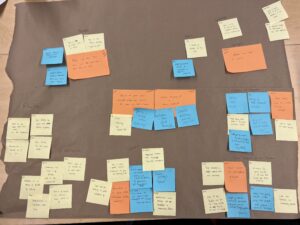
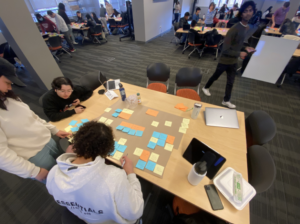
Next, our team moved on to frequency chunking. In this step, we organized the groups into respective rows of sticky notes and ordered each row from top to bottom in descending length. This allowed us to identify which shared insights were most prominent in our data. The three most popular groups of insights all revolved around participants’ motivations for spending time outside: going outside to play games, going outside for mental relief, and going outside to socialize. The two least popular groups of insights were about spending time alone outside and going outside spontaneously. This synthesization technique was especially useful to us because we were able to identify what motivators were most memorable/impactful for our target audience. Our key takeaways were that participants shared interest in being social outside rather than being alone outside. They also shared interest in having clear reasons for going outside (gaming/relief/socialization) rather than going out randomly. These are sentiments that our group can prioritize moving forward.
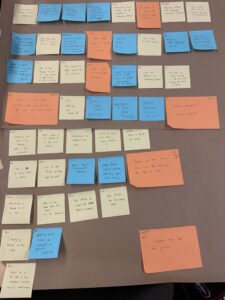
We also created a 2×2 Miroboard to model how users were spread across different factors that drove them to go outside as well as what they personally sought to gain from going outside. Specifically, Intrinsic v. Extrinsic motivations indicate the purpose that ultimately pushes people to go outside. For example, a highly intrinsic motivation would be going outside for the sake of going outside in itself, because the person wanted to. More extrinsic motivations would be going outside for necessary reasons or objectives such as transit. Physical v. mental goals refer to the different goals that people have regarding what they like to get out of being outside; i.e. physical being things like exercise and mental being things like self-reflection or socialization.

Generally one can see that motivations tended to cluster in two areas. It was common for people to go outside due to obligations such as classes or grocery shopping, and those that tended to still use this transit time trended towards mental goals, though there were several aiming to gain exercise or practice physical activities as well. In high concentration, many also went outside for the self-motivated purpose of achieving mental goals like refreshing their mind, thinking reflectively, connecting socially, and attuning to nature.
With all of these techniques, models, and identifications in mind, we synthesized our users (into profiles such as the busy/stressed student, as shown in the proto personas below) and their motivations. These centered around wanting to go outside more, but needing help overcoming hurdles such as time constraints, indecision, or feeling like they need an objective to push them to go outside. Relying on self-motivation is not working for most people due to such hurdles. Three most common pushes that did tend to help people include the prospects of mental health benefits, social interaction, and games. Based on this, we feel that we may be able to intervene by designing a study that does not put much pressure on the user but does provide a sense of direction for going outside. We think it would also be helpful to incorporate game-like goals for them to achieve and a form of interaction with other people, perhaps those that also go outside.
Proto Personas & Journey Maps
A majority of our participants were students on campus. Some of them mostly went outside for transit or chores. It seemed like many had particularly hectic schedules and marked feeling stressed/anxious throughout the day. Some students had work along with their studies and balanced hanging out with friends and exercising. People reported feeling bouts of stress and anxiety while commuting to class or while doing work for class.
From these key insights, our team distilled our two target personas. The first is Occupied Oscar who is a busy university student who enjoys being outside but struggles to find time in their busy day. The other persona is an anxious graduate student who works part-time and needs motivation to get outside.
From the journey maps, we highlighted key places that we could intervene with the user throughout their day. We looked at these times after dinner, during commutes to class/work, and after work sessions. We also noted from our journey map that the average student will regularly catch up with friends/family. From this insight, we wanted our intervention to have a social component that could help motivate students to come outside by seeing their friends go to a similar location. We aimed to have a central location that could be accessible for students on the way to classes or other locations so that people could integrate going outside for leisure throughout the day even if for a couple minutes.
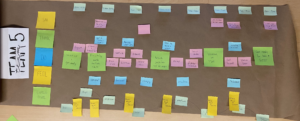
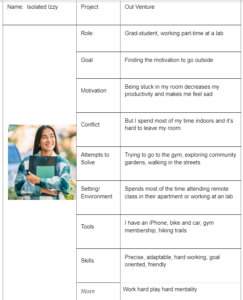
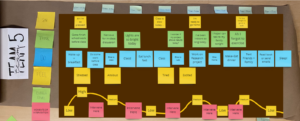
Intervention Study Idea
For our intervention study we decided to make a web app that encourages participants to engage with their physical environment. Everyday, a new location is sent out to participants via the app, along with a photo, description, and the location’s physical address. Participants are asked to visit the designated location and, when they arrive, to add a photo to the app’s image gallery.
The image gallery serves as a community space where all participants can view the photos and locations added by others. Our goal is to foster a sense of community accountability, where participants are motivated to get outside and engage in the study by seeing the activities of others. We believe that this approach will be more effective than simply sending reminders or pestering participants to go to the designated locations.
The combination of individual and community-based motivation is expected to increase participation and help participants sustain healthy habits in the long-term.
Top 3 Ideas:
1. Give people a location to visit each day, and have them send us a photo to confirm they checked in.
Pros:
- People might feel the pressure to check in and obligated to do it
- It may be a way to get people to do it
Cons:
- Not sustainable to have a person managing other people’s outdoor time
- Probably wouldn’t last long term after the study
2. Take a short clip of you enjoying nature and post to the application whenever you want.
Pros:
- Videos allow more user creativity and free reign of usage.
- Videos tend to engage the full screen and utilize the screen real estate.
Cons:
- Videos add unnecessary pressure. Social media supports a much higher amount of photo than video content, and this can act as a proxy for people’s comfort level with posting videos.
- Videos require more storage feasibility on the backend of our web apps.
3. Text service to remind people to go outside for an hour until completed
Pros:
- Keeps users on their toes and constantly reminds them to get outside even if they don’t open the application.
- Streamlined form of communication with user
Cons:
- Notifications can annoy users and would be nudging them, which can be manipulative.
- Excessive pinging may cause users to delete the application.
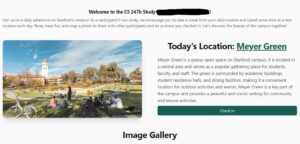

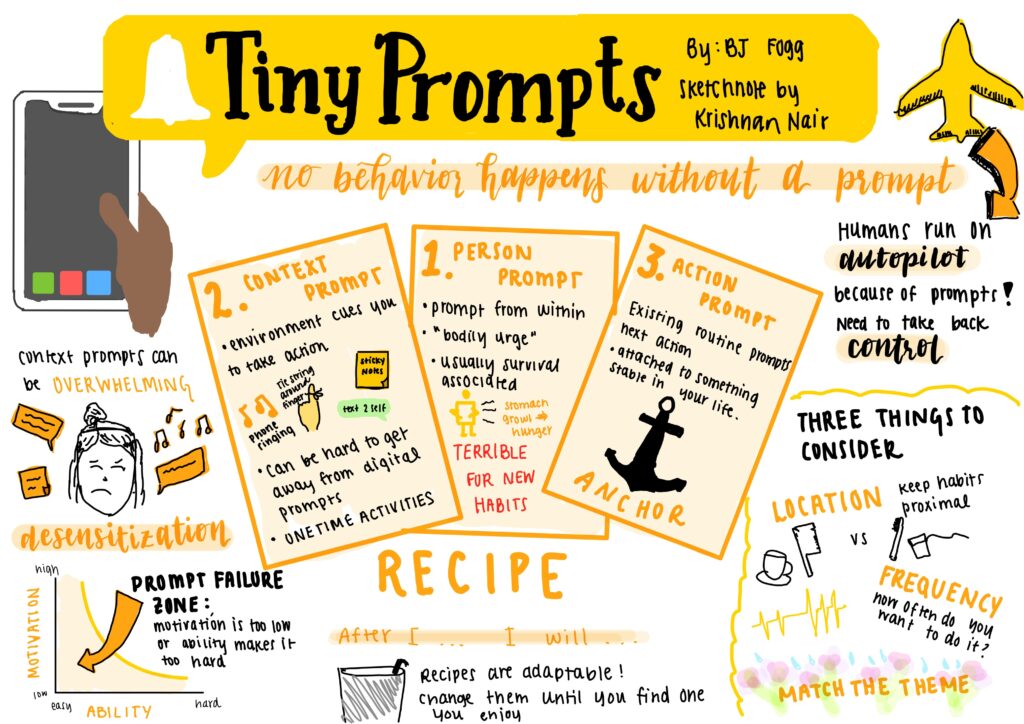
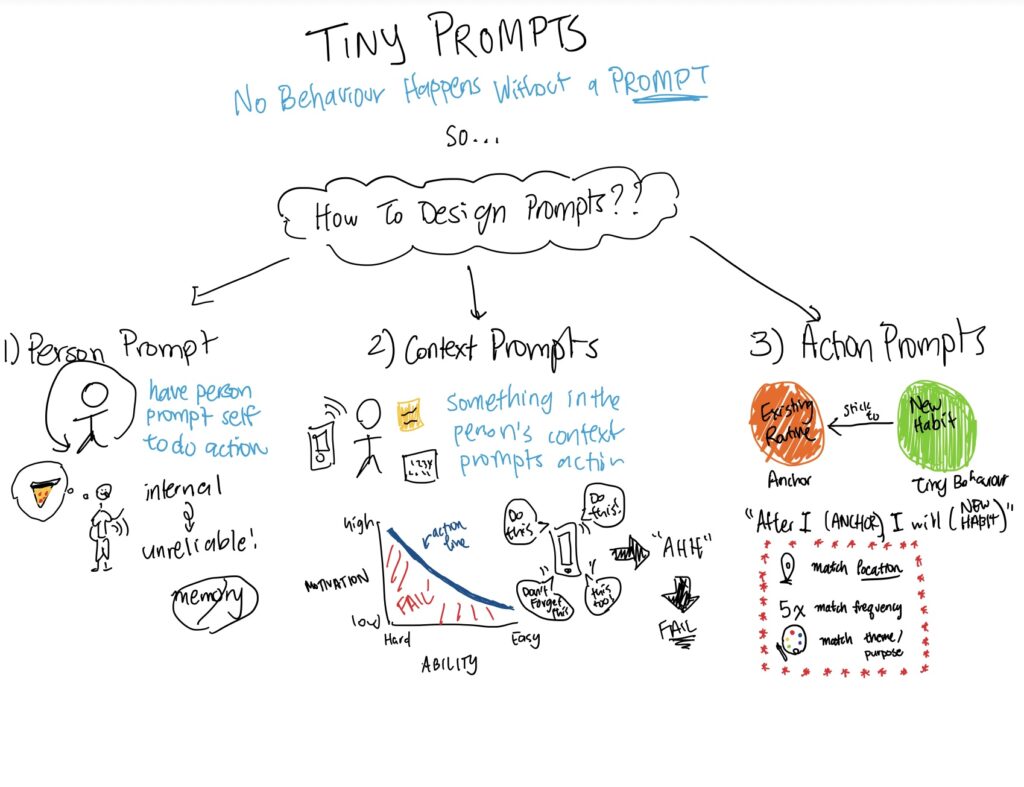
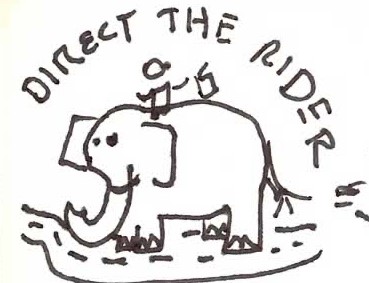
Comments
Comments are closed.